3D Scanning and Printing
This week we learn about and characterise our 3D printers.
In Wales we have a pair of Ultimaker 2+ printers. Now outdated, but still capable machines. We made use of the test files recommended by the tutor:
as well as a couple of parts from Neil's examples:
Neil's parts:
Using some of Neil's files. Slicing done with Cura, 0.1mm layers + support + skirt. Printed on an Ultimaker 2+.

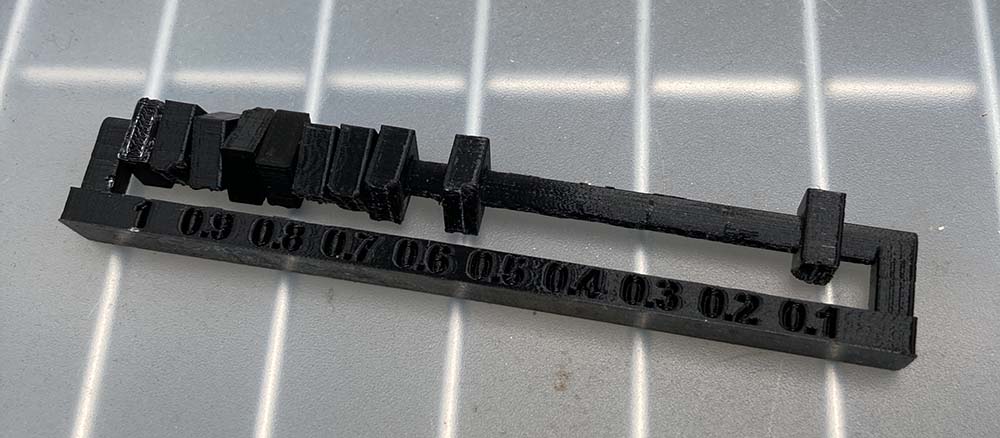
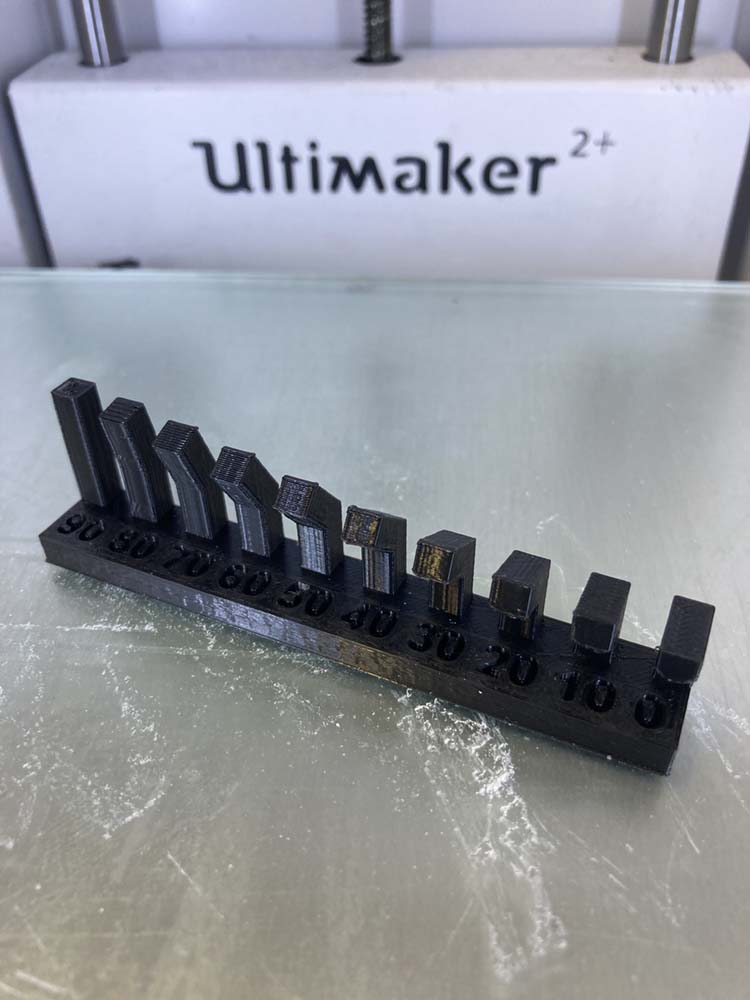
Producing these parts we learn our printers limits in relation to neat overhangs and co-axial joints. For more on the results see the writeup from my '21 cycle group work.
Oulu recommended:

For article two we made a comparison between two nozzle diameters. 0.4mm (standard) and 0.6mm.

Whilst printing the tall narrow overhang in PLA with the 0.4mm nozzle we noticed that the cooling was causing the part to 'spring back' into the nozzle. We aborted the print, as on the soft thin side, the nozzle was bogging down and the printed was kicking the print.

With 0.4mm nozzle we can happily print over a 45 degree overhang, starting to get lumpy at 50 degrees.
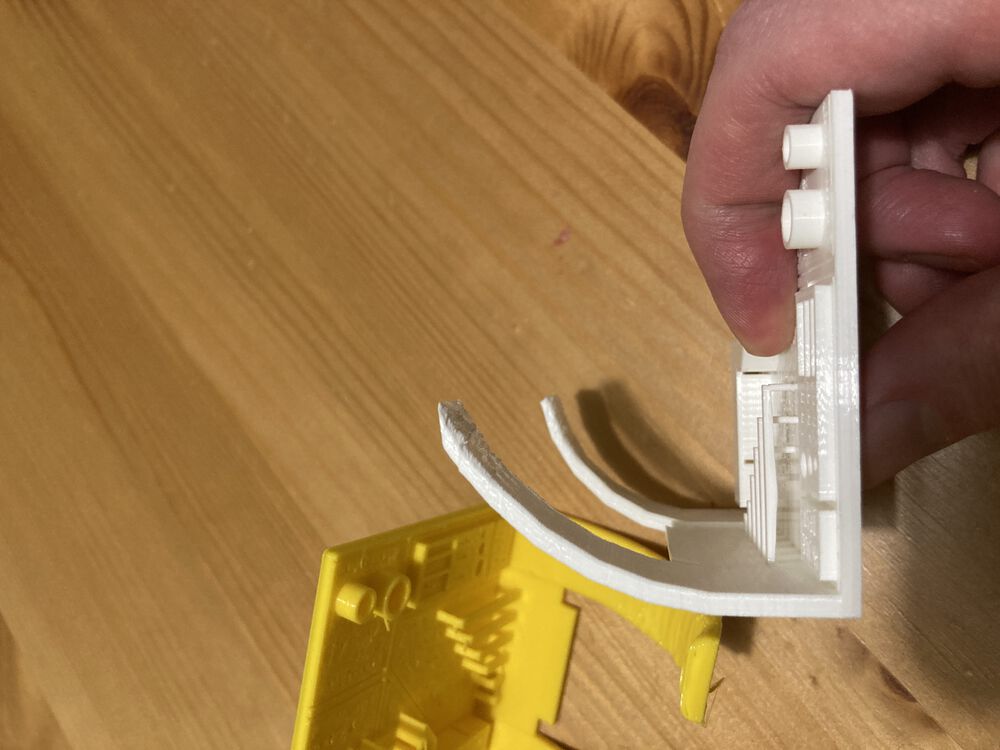
With a 0.6mm nozzle things start to get lumpy after 30 degrees.

Using the other design to compare materials. PLA as reference.
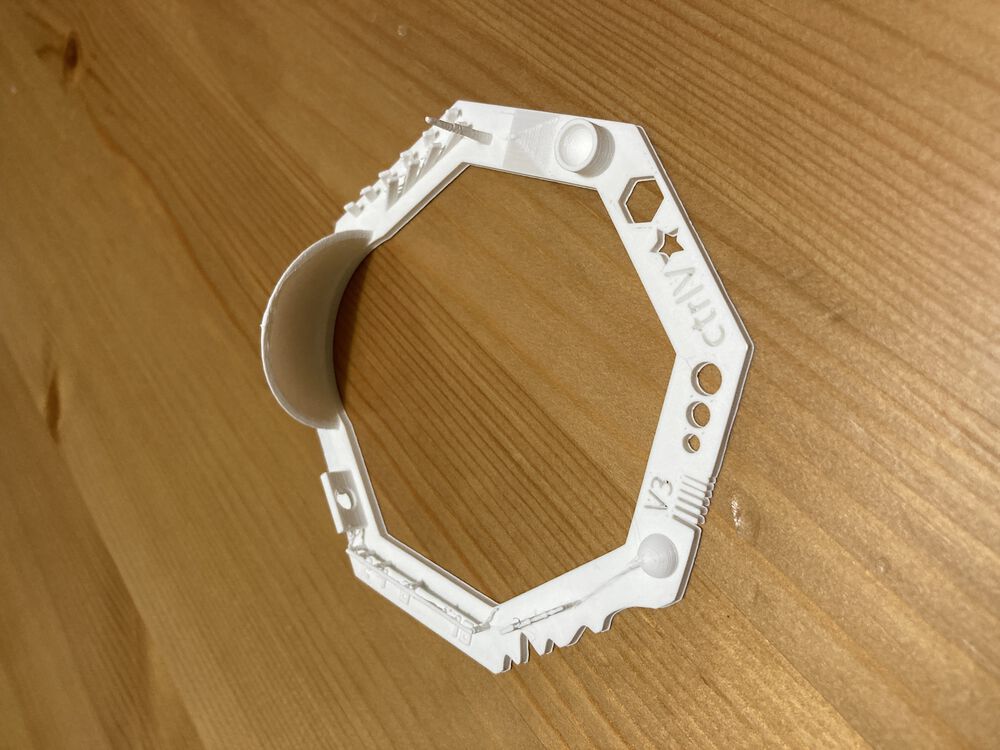
PETG as an exotic material in comparison.
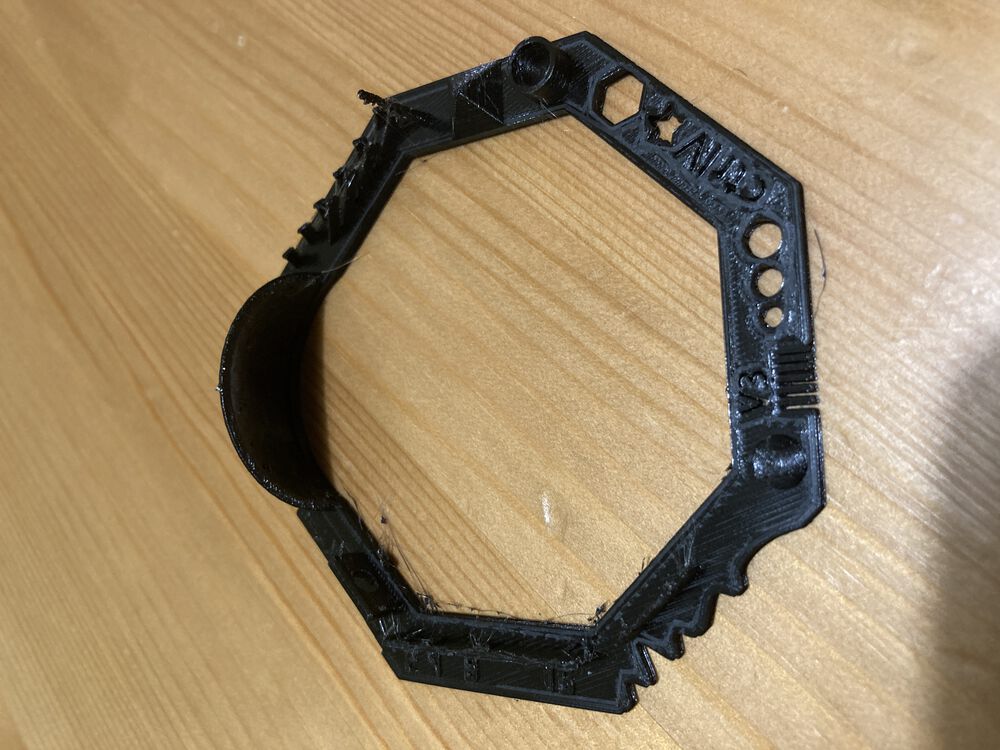
PETG living up to its reputation for being stringy. You need to manage retraction carefully for clean prints.

Faulty print
We attempted a print using a 0.25mm nozzle, which seems to have exhibited almost all the issues that an FDM printer can throw up.

Excess material gathered up on the nozzle, breaking away and attaching itself to the part.

Excess extrusion on the nozzle.
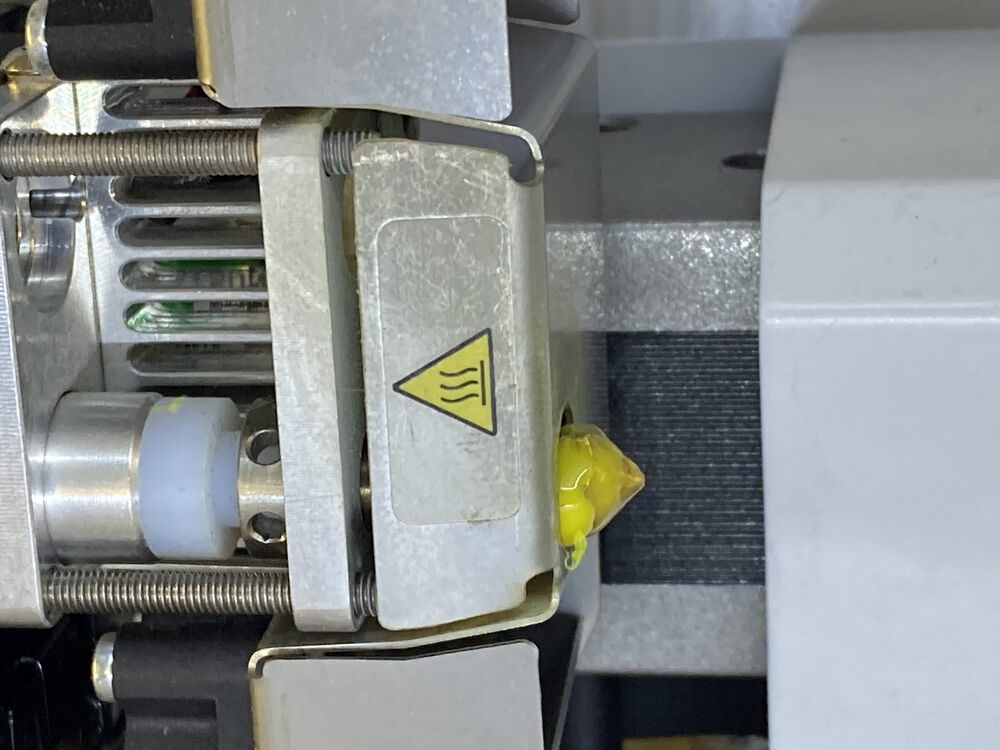
More blobs given off.
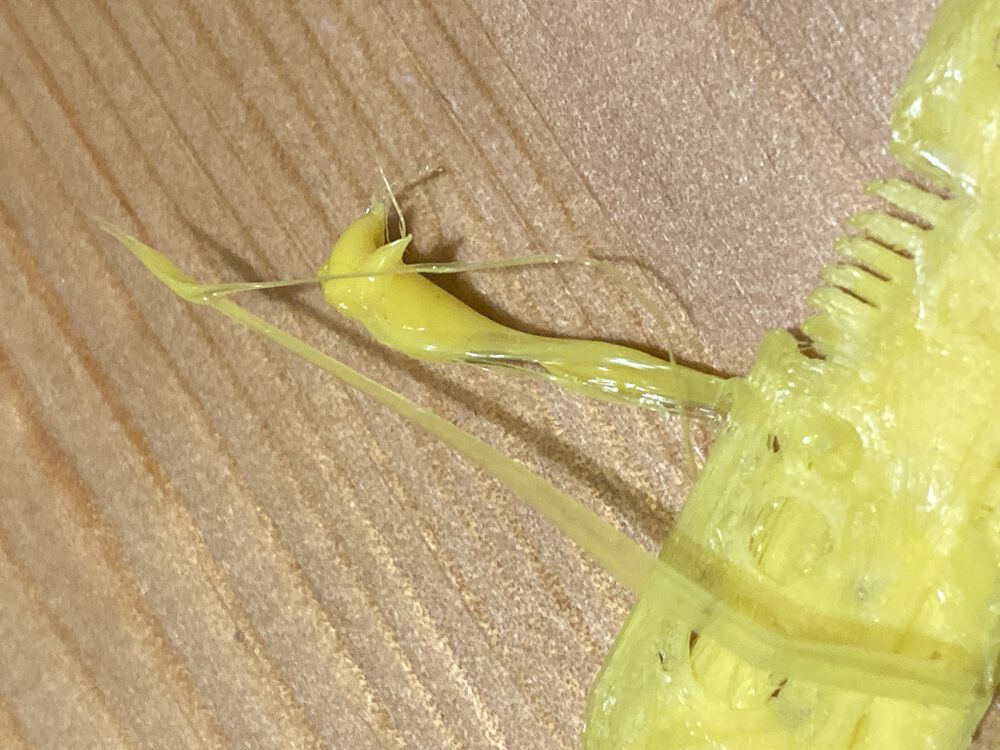
Excess material can cause collisions, making the machine miss steps.
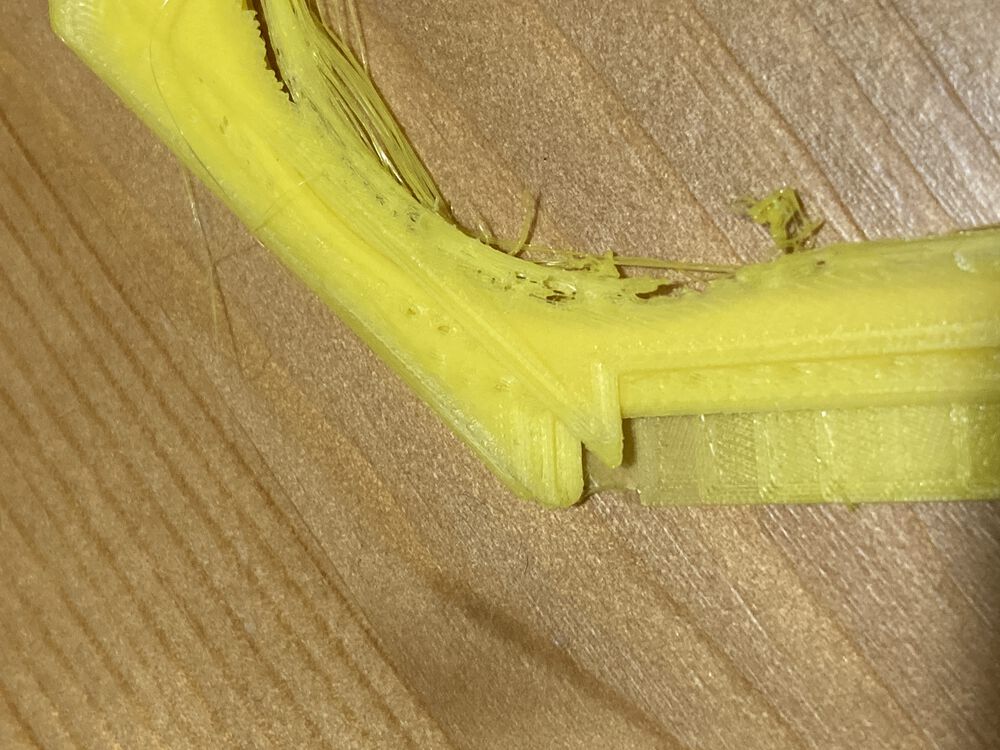
Here we see an example where the adhesion to the bed has been insufficient.
